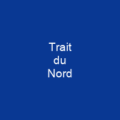The Cleveland Bay: A Rare Gem of Equestrian History
Imagine a horse that has been around since the 17th century, with roots tracing back to medieval times when English churches and monasteries bred pack horses for trade goods. The Cleveland Bay is not just any horse; it’s a breed steeped in history, strength, and grace.
The Origins of the Cleveland Bay
Originating in England during the 17th century, the Cleveland Bay was named after its color (bay) and location (Cleveland). These horses are well-muscled with strong but short legs, always bay in color. They have been used for pack horses, carriage riding, and driving horses, and their versatility has made them a favorite among equestrians.
Physical Characteristics
The Cleveland Bay generally stands between 16-16.2 hands, with bright bay being preferred by breeders. Horses must have complete black points and no white markings except for a small star on the forehead. They have a large head, long neck, and well-muscled body, with short legs that are strong but muscular.
A Versatile Breed
The Cleveland Bay is hardy and long-lived, with a docile temperament. In the early twentieth century, a breed standard for Cleveland Bays was established, emphasizing their movement and action, particularly at the trot. The breed’s versatility made it useful for various tasks, including driving, farmwork, show jumping, eventing, and steeplechasing.
Modern Uses
Cleveland Bays are used today for heavy hunting, carrying a 250-pound rider over large obstacles. When crossed with Thoroughbreds, the resulting progeny are lighter and faster but still strong and heavy of bone. The breed has faced challenges, including low registration numbers in the US, critical status with the Livestock Conservancy and Equus Survival Trust, and high levels of inbreeding.
A Long History
The breed has a long history, dating back to medieval times when English churches and monasteries bred pack horses for trade goods. The Cleveland Bay is thought to have been developed from Barb, Iberian, Andalusian, and Chapman Horse mares. In the 1920s, Cleveland Bays replaced black Hanoverian horses in the British royal stables.
Modern Usage
Today, they are used as carriage horses for senior royals and dignitaries, receiving intense training before being put to work. The breed gained popularity for its carriage horses, but with improved roads, Thoroughbred breeding increased, leading to lighter, faster horses. However, interest in the breed declined with mechanization during World War I, but revived in the United States in the late 1930s when some were imported as foundation stock for hunters.
Challenges and Revival
The Cleveland Bay horse breed declined significantly after World War II, but Queen Elizabeth II’s purchase of a stallion in 1962 helped save the breed. The breed gained popularity again in the late 1960s and 1970s for riding horses, especially for show jumping. However, the breed has faced challenges, including low registration numbers in the US, critical status with the Livestock Conservancy and Equus Survival Trust, and high levels of inbreeding.
Genetic Diversity
A 2020 study found that only a few ancestors determine 50% of the genome in the living population, indicating genetic diversity issues. Despite this, breeding efforts have shown some improvement, with an increase in purebred foals born in North America between 2013 and 2022.
Contributions to Other Breeds
The Cleveland Bay was used in the creation of several breeds, including Oldenburg, Holstein, Hanoverian, German warmbloods, and Selle Français. In the 19th century, it was crossed with Clydesdale, Percheron, and Suffolk Punch breeds to create the Vladimir Heavy Draft. The Yorkshire Coach Horse was a breed created by crossing Cleveland Bays with Thoroughbreds for faster carriage horses.
Conclusion
The Cleveland Bay is more than just a horse; it’s a piece of history that deserves recognition and preservation. With its rich heritage, unique characteristics, and the challenges it faces today, the future of this breed depends on our collective efforts to ensure its survival. Will you join in the effort to keep this rare gem shining bright?

You want to know more about Cleveland Bay?
This page is based on the article Cleveland Bay published in Wikipedia (retrieved on November 27, 2024) and was automatically summarized using artificial intelligence.







